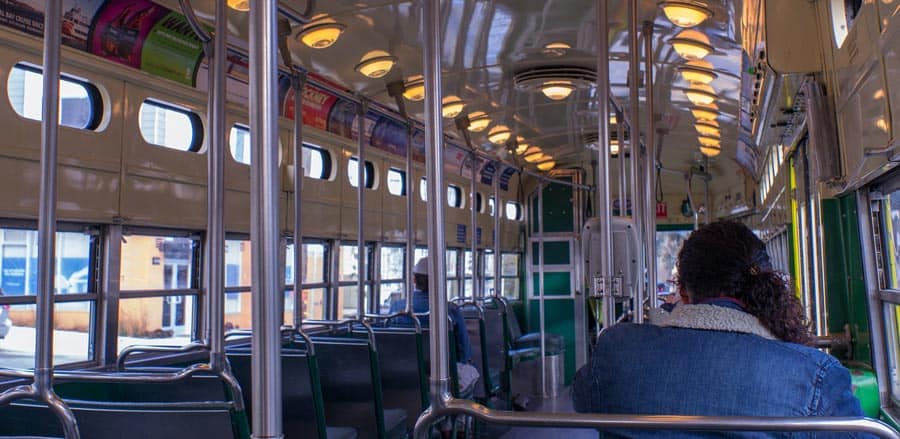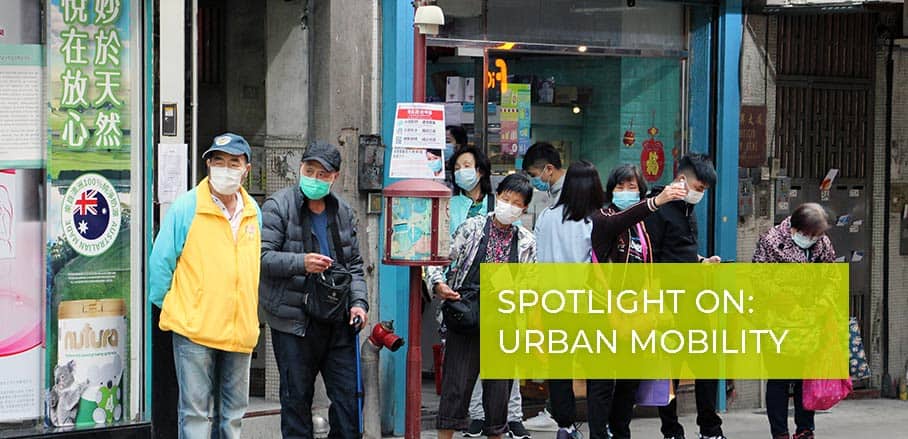The TUMI Observatory on COVID19
In cities around the world, many people come together daily to use public transport – a risky endeavor in times of a pandemic. The Transformative Urban Mobility Initiative TUMI takes a look at protective measures of urban public transport systems around the world.
On March 11, the World Health Organization (WHO) has declared COVID-19 a global pandemic; as of March 30, about three billion people live in isolation as a precaution against the spread of the virus. It is highly likely that the coronavirus outbreak will have longer-term impacts on our individual behavior and lifestyle, the way we work, consume, and travel. Public transport is severely impacted by travel bans and individual concerns to avoid public gatherings leading to plummeting ridership and reduced travel and transport demand. The overall picture and the longer-term implications of the public transport systems are still very complex and fuzzy.
In the face of this global epidemic, questions like: “What are the key trends emerging related to sustainable mobility?” “What are preliminary lessons learned from measures taken on a global scale?” are frequently debated.
TUMI – an initiative on sustainable mobility formed through founded by the German Ministry for Economic Development and Cooperation that supports cities in realising innovative urban mobility solutions – aims to provide some guidance on these questions. Therefore, TUMI has recently researched the transport-oriented corona measures on a global scale.
Our findings show that cities are undertaking measures, especially in the areas of:
- Protecting transportation staff and infrastructure
- Protecting public transport passengers
- Coordinated demand management
Protection of Transportation Staff and Infrastructure
Firstly, employees are a crucial factor in public transport. Especially during this crisis, since they have close contact with customers and passengers. Additionally, adjusting infrastructure is key to keep employees and transportation services safe and sustainable. Providing information and training on the new situation, provision of protective gear and disinfection, regular health check-up for employees, e-ticketing, ensuring separation of drivers/ticket sellers and passengers, and provision of additional, separating infrastructure should be taken into close consideration.

© David Anderson/Unsplash
International associations like the American Public Transport Association (APTA) , the Transportation Research Board (TRB), and the International Association for Public Transport (UITP) provide factsheets and general information on the protection of employees and infrastructure. For example, APTA recommends the following measures:
- Engineering Controls: Separate people from the contamination (e.g., Plexiglas barriers for drivers and ticket sellers)
- Administrative Controls: Training, plans, policies, and procedures that articulate and enforce means to reduce infection
- Personal Protective Equipment: Gloves and respiratory protection to reduce contamination
- Hand Hygiene: Hand washing, waterless hand sanitizer
- Environmental Hygiene: Cleaning (e.g., steam cleaning, disinfectants) of stations, vehicles, and workplaces to minimize surface contamination (fomites)
- Social Distancing: Maintain a space of 3-6 feet between persons to minimize contamination from aerosol and droplets (e.g., sneezing and coughing); canceling church, schools, declaring “snow days” when everyone stays home. (It is important to note that social distancing decisions must be made in collaboration with all organizations that will be impacted. For example, if a small town is significantly impacted, a collaborative decision may be made to close schools, shopping centers, churches, non-critical medical facilities and government offices. This in turn would have direct impacts on the extent of need for transit.)
- Ventilation: Control heating, ventilation, and air conditioning to reduce the spread of contamination
In China, the Shenzhen Bus Group Company has compiled a comprehensive report on measures in the fight against the coronavirus. The report adds to the recommendations above by giving information on free health services and online training courses to their team through online clinics.
Many public transport operators prohibit passengers from boarding at the front and no longer sell tickets on the bus. This should become the rule even without a spreading virus and accelerate the transition to electronic and contactless ticketing/payment like smart cards or QR-code based ticketing/payment). Examples include Berlin, Beijing, and cities in Switzerland and Poland. In Indonesia, Public Transport TransJakarta will implement a non-cash payment system at all TransJakarta stops to prevent transmission of the coronavirus. Furthermore, drivers and ticket sellers should be separated from passengers by plexiglass or other means. Temporary measures to avoid close contact can include plastic tape “barriers” like in Switzerland.
Protecting Public Transport Passengers
Secondly, the protection of passengers is not only a necessary welfare measure but also an important measure to maintain people’s confidence in public transport services. Sharing general information and risk information, providing regularly updated transport schedules, access control, temperature checks, disinfection, and social distancing for passengers play an essential role in light of the current crisis.
APTA offers many examples of sharing information for passengers. Posters and Social Media information examples from Singapore are also illustrative. The use of videos as applied in the King County Metro can enhance outreach and accessibility for users. Furthermore, in order to minimise the risk of infected people entering public transport stations, health control checkpoints have been added in many cities in China. The Shenzhen Bus Group Company has provided information on how and when vehicles are cleaned and disinfected.
To ensure social distancing, the city administration in Mongolia’s capital Ulaan Bataar has reduced bus operations by 50 per cent. In Shenzhen, reducing the occupancy of public transport vehicles to 50 per cent has become mandatory.
Coordinated Demand Management
Beyond the protection of passengers and transport workers against the epidemic, coordinated transport demand control has become a critical issue. Issues such as impact assessment, public transport booking and appointment systems, and shifting to cycling can be useful to manage demand effectively.
In Brazil, where the decrease in demand for public transportation is estimated between 30 and 50 per cent, some precedent policies are being developed. In Curitiba, urban bus trips have been reduced since March 20. And as of March 23, buses are operating on Saturday’s schedules throughout the week. On Saturdays, the Sunday schedule will be applied.
The government of Pernambuco announced that the bus fleet in the metropolitan region of the state capital Recife was reduced by 25 per cent in order to compensate for the 45 per cent drop in demand registered in the system. The Recife Subway is operating only during peak hours. In Rio de Janeiro, an ordinance from March 17 determined that public transport vehicles and tourism companies should only carry seated passengers in Rio city in order to guarantee that vehicles are not overcrowded.
In Germany, the Minister of Health, Mr. Jens Spahn, stressed the importance of cycling as a transportation mode in order to reduce risks of infection. Bogotá has set up a network of emergency bikeways. However, the measure has been suspended after four days, as a full quarantine started.
To read the article in its full length and receive updates, please visit TUMI’s website or follow us on Twitter @TUMInitiative.
- The TUMI Observatory on COVID19 - 7. May 2020
